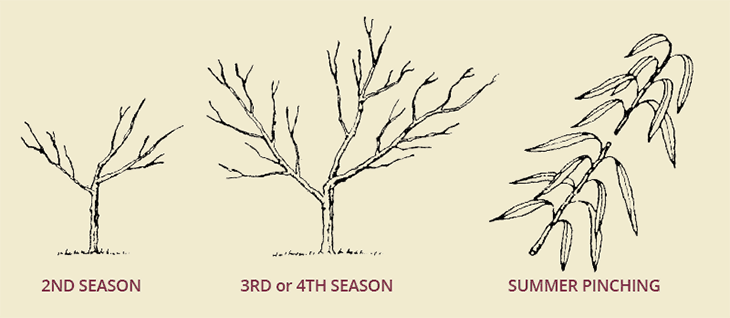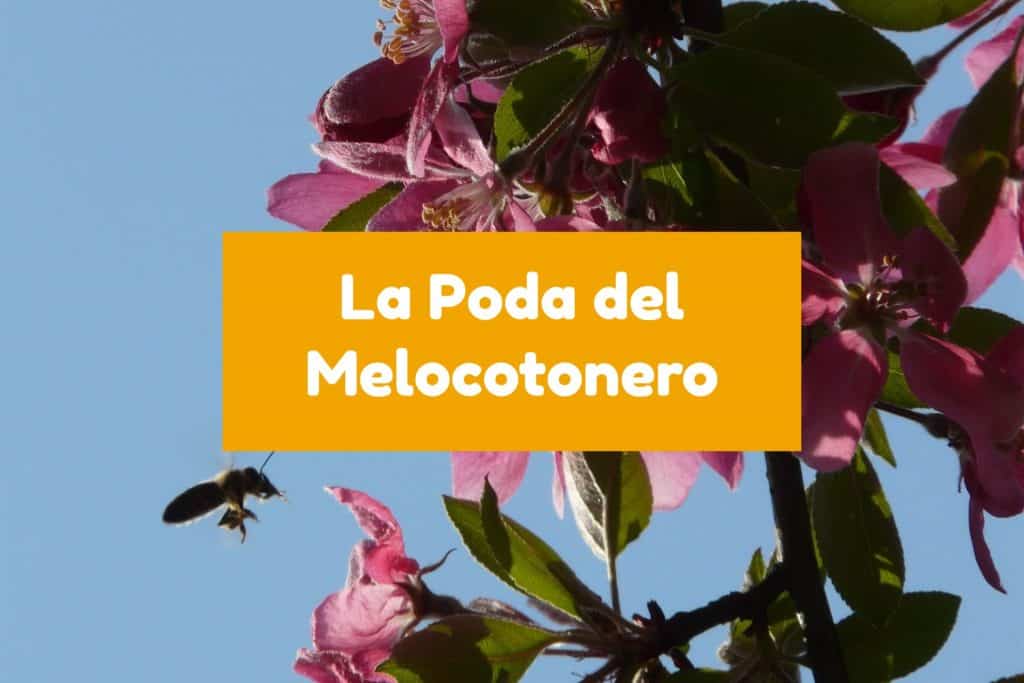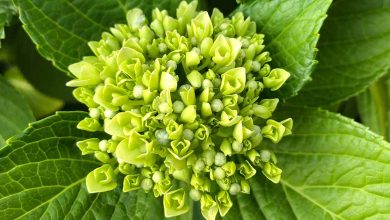Peach Tree Pruning: How and When to do it? [Complete Guide]

The peach tree, also called Prunus Persica,It is a fruit tree of the Rosaceae family that prefers deep, light and well-drained soils.
It has a high nutritional content because it provides calories and energy necessary to complement food due to its vitamin and protein value.
Maybe you are also interested in:
- Plant a peach tree step by step.
- Pests and diseases of the peach tree.
- How to fertilize a peach tree.
- Peach tree leprosy.
Why prune the peach tree?
There are free-growing peach trees, which do not require much pruning, and trellised ones, whose fruits are easier to obtain.
Free-growing peach trees occur inwarm zones;on the contrary, those with trellises are affected by cold areas.
 Also called peach –the peach and the peach are one–, it comes from the Asian continent, especially from Afghanistan, Iran and China and was brought to the West by the Romans.
Also called peach –the peach and the peach are one–, it comes from the Asian continent, especially from Afghanistan, Iran and China and was brought to the West by the Romans.
The reasons for pruning a peach tree are as follows:
- Correct defects, giving it the shape of a glass.
- Prevent the accumulation of branches to allow the passage of air and avoid long branches.
- Improve spray penetration.
- Improve the quality of the futo.
- Balance the branches.
- Increase the entrance of light.
- Increase production.
- Increase flowering.
- Maximize space.
What is the best date to prune it?
The peach tree will bloom after each pruning, with satisfactory warm and cold weather . The timing of pruning depends on the number of trees for cultivation.
Thus, growers of few trees can wait for the pink bud to do the pruning; those of large crops should not prune earlier than necessary.
Prune peach trees in summermay give better results in terms of keeping them short.
However, if the idea is to cut the tops, it is best to wait until the end of winter or just after the summer harvest.
What important points should you keep in mind?
According to its developmentthe characteristics of peach trees should be taken into account,because the free-growing ones have different sizes.
- Standing tall, with a trunk of 1.60 to 1.80 in adulthood.
- Medium foot, with a height that goes from 1 meter to 1.20, with branches developed in all directions starting from the top of the trunk.
- Standing low, with a very short trunk of just 0.6 m, with the branches extending from the top of the trunk.
However, the peach tree can also reach a greater height, 6 or 8 meters.
The trellis peach tree must be cultivated in the shelter of a wall, in two ways:
- As palmette, with two branches of the same height located in parallel at 50 cm from each other.
- As a fan palmette where the branches come out of a short trunk, from the same place distributed in a fan.
As this type of trellises are not easy to acquire, it will be up to the pruner to buy a one-year-old plant to shape it.
You should remove 40% of the branches each year to strengthen the growth of the fruit tree after pruning so that there are fruitful branches.
How to prune a peach tree? Step by Step
- Free-growing peach trees should be pruned from time to time to encourage branch production.
- Between November and March a few centimeters should be cut from the end of the branches, leaving 30 cm in length.
- Every three years, in November, it is necessary to eliminate the excess of wooden branches and the branches that are poorly placed or in poor condition; the cut must be at the starting point of the branch.
- Branches that bear fruit far away from the main branches of larger diameter should be removed.
- A single wood-producing branch should be kept, which should be closer to the base, and pruned above the second well-formed bud; the two buds will produce mixed branches in spring, thus ensuring continuity in fruit production.
- Something that the grower should know is that there are only two types of pruning cuts: trimming and branch thinning; any other type is variation of those two.
- Trimming is the elimination or removal of a growing branch, whether main or secondary.
- The thinning or thinning cuts of branches are the elimination of complete, main or secondary branches but eliminating them from their origin.
What happens if we make breaks?
The breakouts should cause:
- Increase in the growth of the branches of the current cycle.
- Decreased light levels within the tree canopy.
- Increase the flowering of the peach tree.
- Inflexible branches.
What happens if we thin out?
On the contrary, thinning will cause:

![Photo of How to Transplant an Indoor Plant: [Complete Guide]](https://www.complete-gardening.com/wp-content/uploads/2022/08/how-to-transplant-an-indoor-plant-complete-guide-390x220.jpg)


